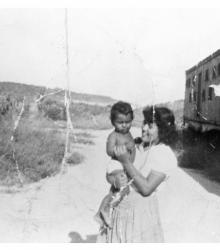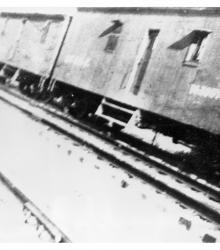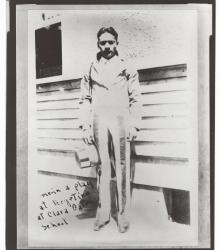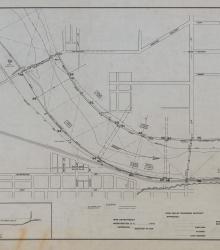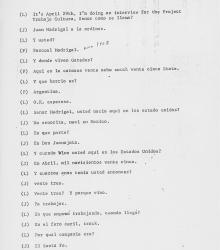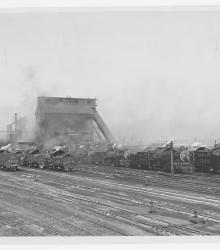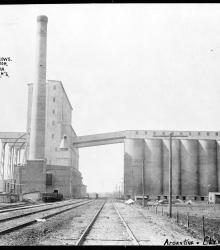A woman and her child in the railyard area where they lived. Railroad companies reused cars as housing for Mexican railroad workers, many of whom were recent immigrants could not find or afford more permanent housing.
Argentine
A woman and her child outside of the boxcar where they lived. Railroad companies reused cars as housing for Mexican railroad workers, many of whom were recent immigrants could not find or afford more permanent housing.
Photograph of railroad cars used as housing for Mexican railroad workers. Many workers were recent immigrants could not find or afford more permanent housing, leading to railroad companies repurposing railcars into bunkhouses for their employees.
Photograph of students outside the Clara Barton School. The school served the Mexican community of Kansas City, Kansas, from the 1920s until it was damaged by flooding in 1951.
Photograph of a student costumed for a play at Clara Barton School. The school served the Mexican community of Kansas City, Kansas, from the 1920s until it was damaged by flooding in 1951.
Set of 3 hand-drawn ink-on-linen maps showing the harbor lines for the Kansas River at Kansas City, Kansas, from Turkey Creek to the Argentine Wagon Bridge, showing U. S. Harbor lines, and Kaw Valley Drainage Districts modified lines. Prepared by the Chief Engineer, Drainage Board, for the Kaw Valley Drainage District.
Two-part Interview with Juan and Pascual Madrigal by Laurie Bretz as part of the Trabajo y Cultura (Work & Culture) Project documenting the Kansas City, Kansas, Hispanic community.
1920s photograph of switch engines belonging to the Atchison, Topeka & Santa Fe Railway in the Argentine rail yards in Kansas City, Kansas.
Photograph of a grain elevator by a railroad in the Argentine industrial district of Kansas City, Kansas. On the image "C.A Fellows Contractor Topeka, Kansas 1921" is written.

